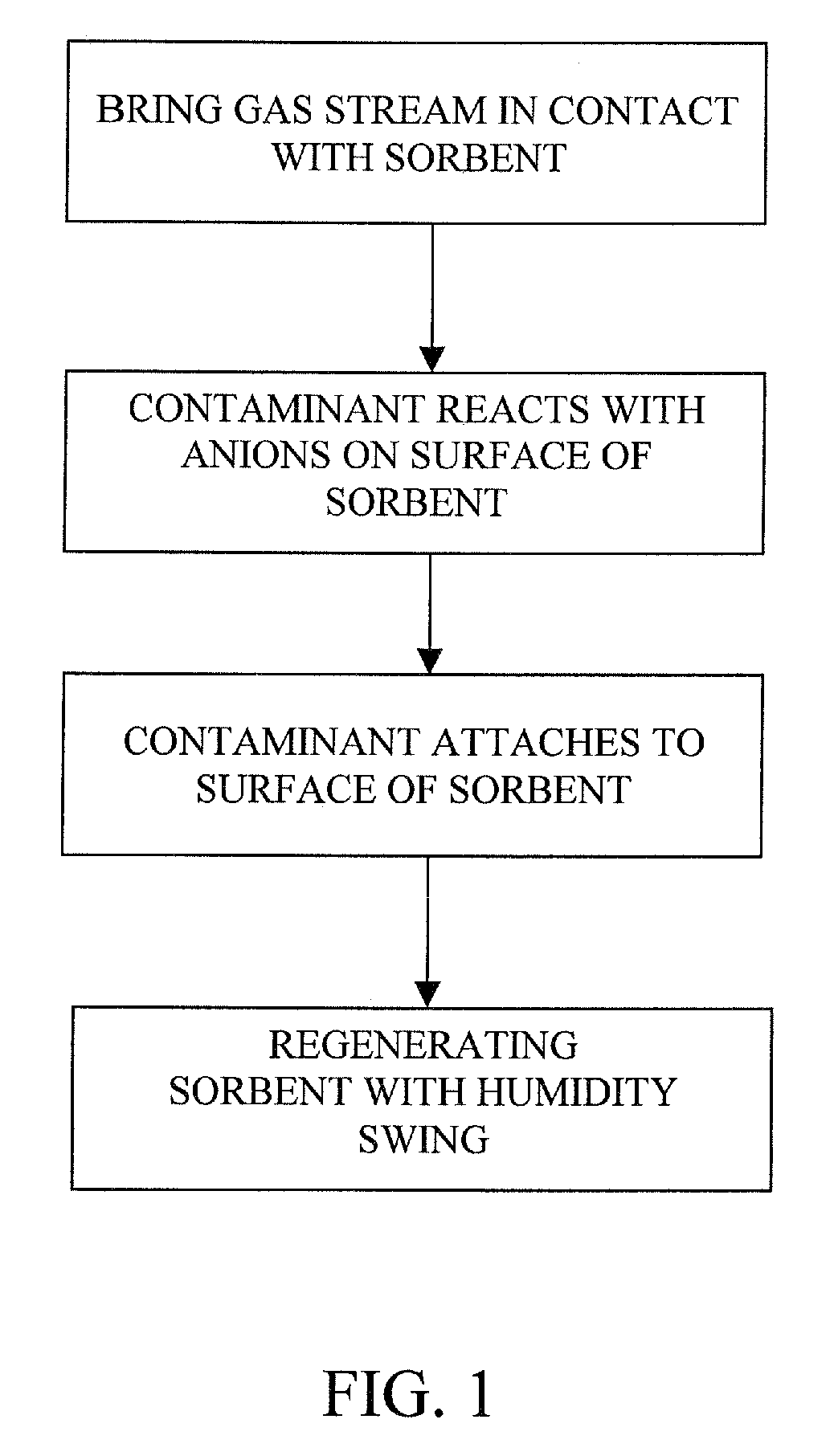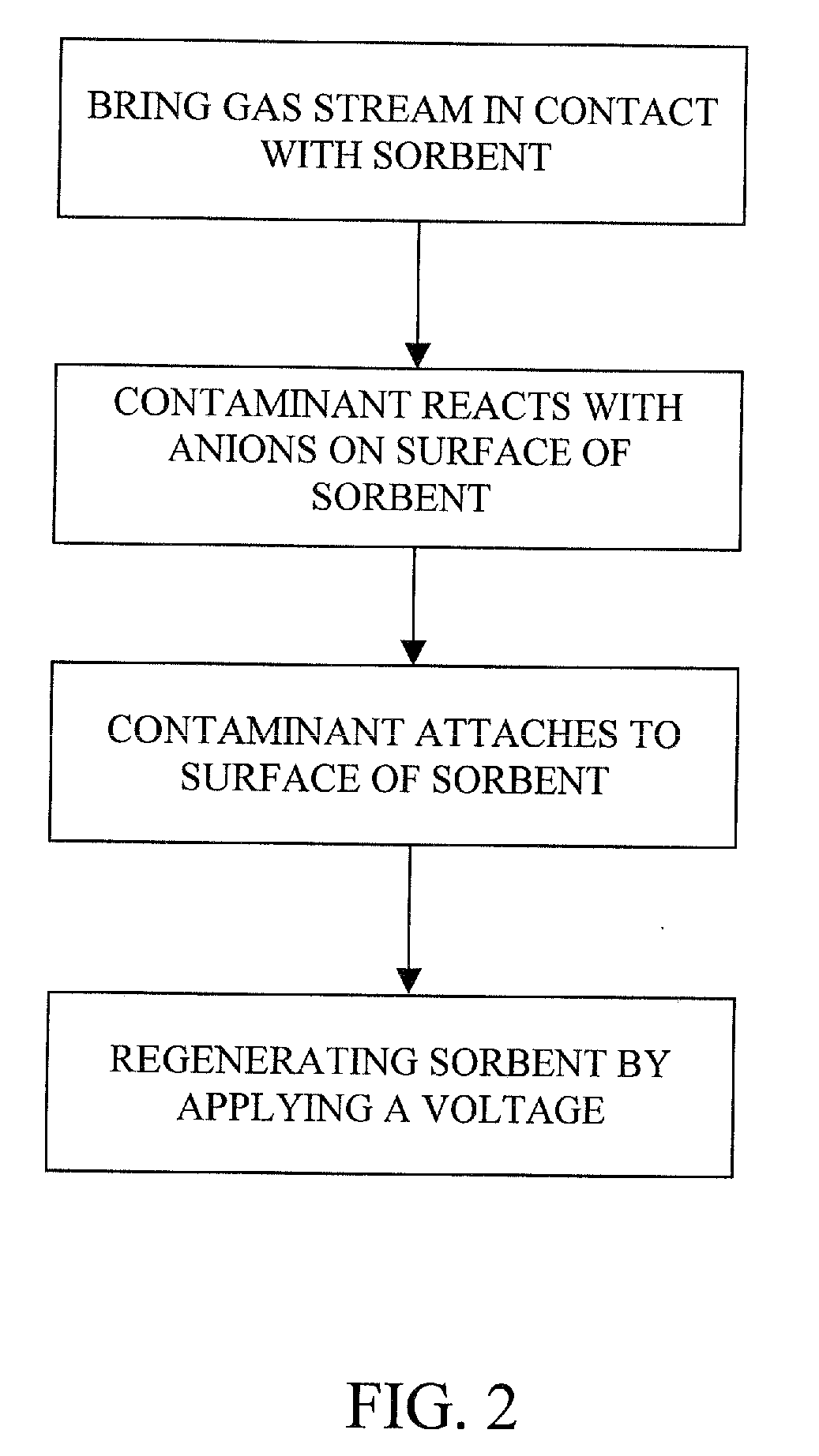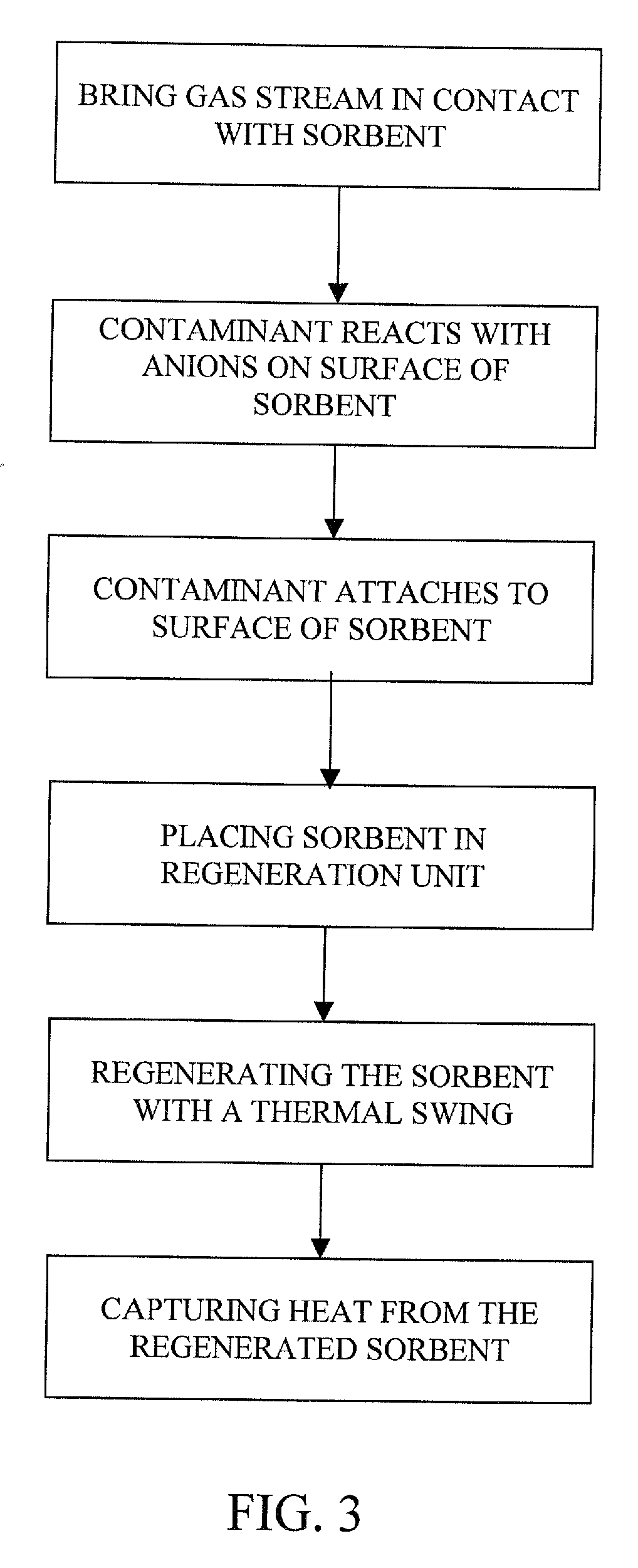Removal of carbon dioxide from air
a technology of carbon dioxide and air, applied in the direction of sulfur compounds, hydrogen sulfides, separation processes, etc., can solve the problems of large-scale hydrocarbon-fueled power plants that are not fully protected from exhausting cosub>2 /sub>into the atmosphere, the number of small-scale, widely-distributed emitters that are impractical to mitigate at the source, and the need to curtail cosub>2 /sub>emissions from all sources
- Summary
- Abstract
- Description
- Claims
- Application Information
AI Technical Summary
Benefits of technology
Problems solved by technology
Method used
Image
Examples
Embodiment Construction
[0024]The present invention provides a method and apparatus for the extraction of a contaminant from a gas stream. The present invention is discussed in reference to a method and apparatus for capturing CO2 from ambient air, but the technology is also applicable to exhaust air or other gas streams and may be used to capture hydrogen sulfide, ammonia, or other common contaminants from such gas streams.
[0025]In co-pending patent application Ser. No. PCT / US07 / 84880, assigned to a common assignee and incorporated by reference herein, we discuss a CO2 capture process that utilizes a humidity swing to regenerate a sorbent, releasing a mixture of CO2 and water vapor. The water vapor may be removed from the mixture by compression or cooling, either of which will cause the water vapor to condense and precipitate out of the mixture.
[0026]A first aspect of the present invention provides an improved substrate that can hold cations embedded into its surface, thereby facilitating the capture and ...
PUM
| Property | Measurement | Unit |
|---|---|---|
| Temperature | aaaaa | aaaaa |
| Electric potential / voltage | aaaaa | aaaaa |
| Heat | aaaaa | aaaaa |
Abstract
Description
Claims
Application Information
 Login to View More
Login to View More - R&D
- Intellectual Property
- Life Sciences
- Materials
- Tech Scout
- Unparalleled Data Quality
- Higher Quality Content
- 60% Fewer Hallucinations
Browse by: Latest US Patents, China's latest patents, Technical Efficacy Thesaurus, Application Domain, Technology Topic, Popular Technical Reports.
© 2025 PatSnap. All rights reserved.Legal|Privacy policy|Modern Slavery Act Transparency Statement|Sitemap|About US| Contact US: help@patsnap.com



